KEF REFERENCE 1 META Review – Meet Meta
KEF’s new Reference 1 Meta loudspeaker has Meta technology. Noel Keywood listens.
There’s a fascinating problem little talked about with loudspeakers: how to make them reference-accurate without sounding boring. KEF show how in their recent Reference I Meta that I’m reviewing here. It was fascinatingly perfect – I could clearly hear so (after a bit of fiddling).To enjoy what could be described as near-perfection you need £, or £ more with KEF’s own S-RFI floor stands as shown here. Gulp.
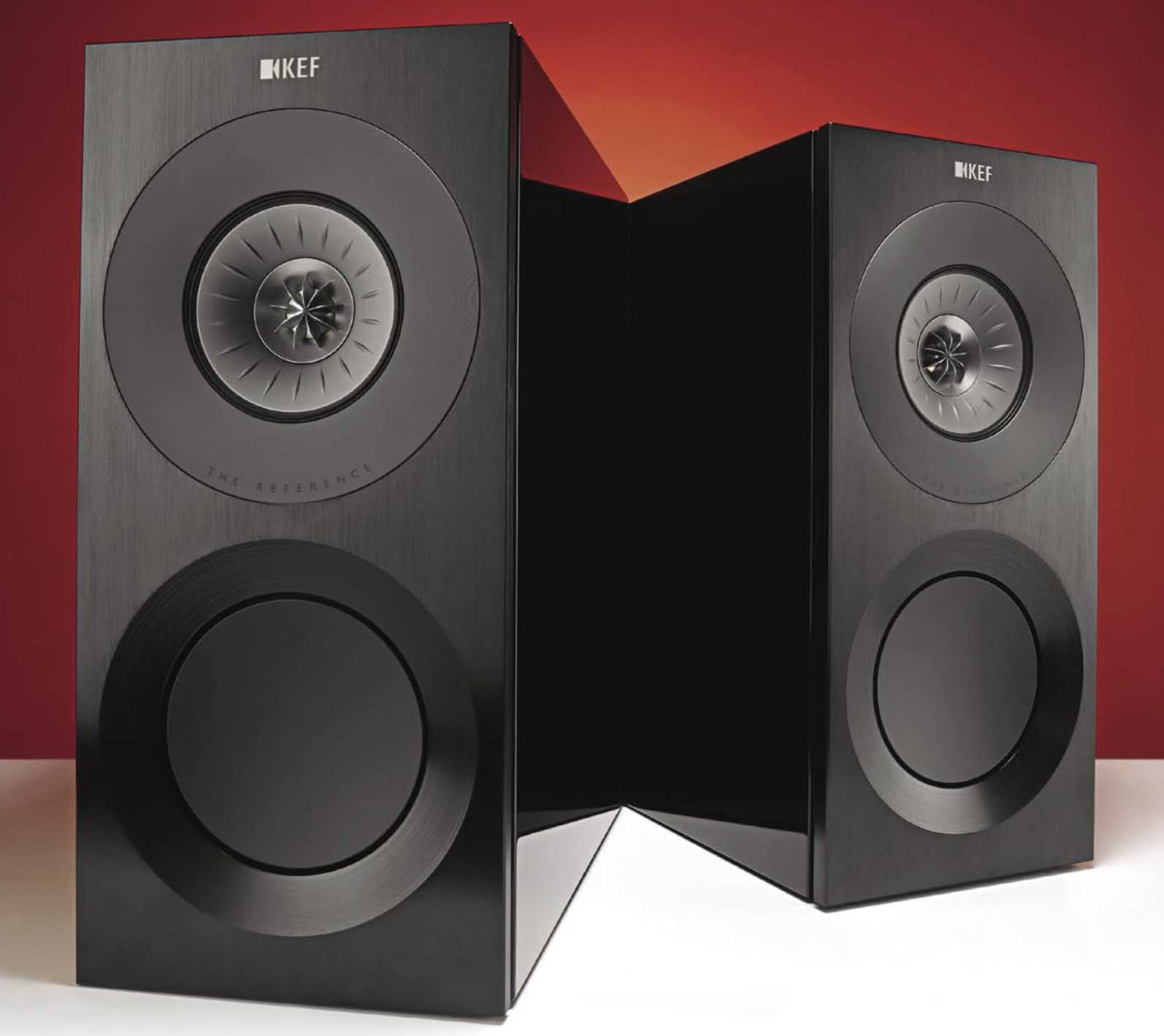
I designed and built many accurate, flat response loudspeakers for World Audio Design through the 1990s and it wasn’t difficult, given a decent set of drive units. What was difficult – and remains so it appears – was to avoid a lifeless sound. Easy to spice things up by adding a bit of treble and bass boost. As commonly done nowadays. KEF avoid such trickery and it was good to hear the outcome, since I very much believe in fundamental accuracy – one of those values from long ago that many manufacturers wish to quietly ignore for the sake of excitement in the showroom.
How do KEF combine accuracy with excitement? Well, not entirely through their vaunted use of Meta material.That’s confined to the tweeter they say, leaving much of the audio band un-Meta’d.The Uni-Q driver (at top) comprises 25mm (1in) alloy tweeter sitting at centre of a 125mm (Sin) alloy cone mid-range unit in what is termed a co-axial arrangement. Note in particular the stiffening ribs/waveguides of the midrange cone, giving it stable behaviour over its operating band of 450Hz to 2.1 kHz – a crucial region subjectively because this is where the ear is very perceptive. Also note how a surround blends this driver into the cabinet’s front face, for a good acoustic match.
The central tweeter has Tangerine waveguides to control dispersion because it sits symmetrically in what is a shallow horn formed by the midrange cone – and symmetry here is not good, leading to phase issues and small response perturbations when measured on-axis (but not off-axis). Such problems have been banished here.

One of the peculiarly offset port retaining ring (left) together with a long black low-frequency foam insert. In the ‘speaker here is the alternative short grey insert.
Behind the tweeter, we are told, lies an acoustic maze of Metamaterial that is asymmetric so offers broad absorption to high frequencies to provide clean treble. And I believe that helps toward the very smooth, extended response we measured.
- 7Review earns Amazon affiliate commissions from qualifying purchases.
Below 450Hz a 165mm (6.5in) aluminium cone bass unit comes into play, loaded by a rear port, extending bass down to a low 37Hz KEF say, but in practice it reached down lower, to a very low 30Hz with the optional long port (black) supplied. As I became immediately aware when listening. Since this drive unit covers the lower midband it makes an important subjective contribution.
The Reference I Meta looks compact from the front perhaps, measuring 205mm wide and 440mm high, but it is deep at 422mm and very heavy at 18.2kgs (44.1 lbs) apiece.The sturdy KEF stands raise height to 990mm. Ours came in a deep gloss black but a range of finishes are available and as you might hope the quality of construction and finish is superb. For those who would rather not see the drive units a cloth grille is supplied.
These speakers are tweakable: the port can be changed. Supplied are two dense-foam inserts: short (grey) and long (black). I listened to and ran-in the KEFs before measurement and in quick time removed the long black port as supplied and inserted the short grey port to reduce boom in my 17ft long lounge.There was a very obvious difference between
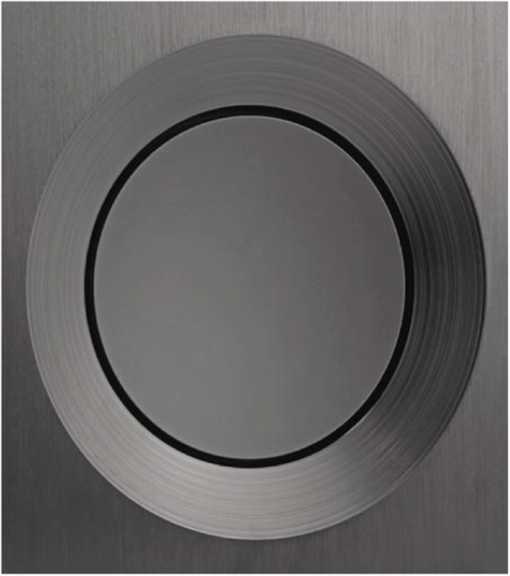
The 163mm alloy coned bass unit covers the lower audio band as well as bass, from 450Hz right down to 37Hz KEF say. It does quite a lot of work in this ‘speaker.
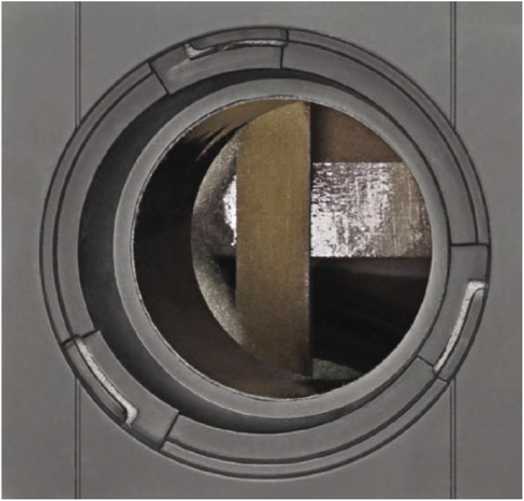
The port without foam insert or the profiled retaining ring that clips in and rotates to lock.
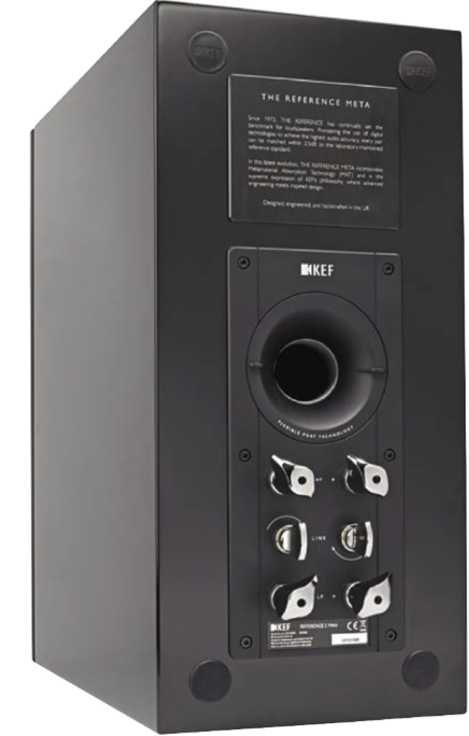
Bi-wiring is made possible by simply turning finger-screws to break connection between bass unit and UniQ driver.
the ports, the long port suiting a bigger room than mine. Changing ports was a fiddle: a shaped plastic retainer must be unclipped. But once done bass better integrated with the sound.
SOUND QUALITY
I paired the KEFs with our grippy and well illuminated PrimaLuna EVO 300 hybrid amplifier, with its intensely detailed sound and fast, punchy bass from what is a high power (100W) FET amplifier fronted by valve preamp. Connection was through Chord Company Signature Reference screened cables.
The source CD player was an Oppo BDP-205D with its ESS ES9038Pro Sabre DAC, and this was also used to deliver in hires from a MacBook Pro using an Audirvana+ software player to play DSD, as well as PCM.The Mac was run by battery to be a fully floating source free from ground loop noise; it was connected by USB.
The KEFs did not come at me, so much as gently and persuasively beguile me. And it didn’t take long. The strings of Antonio Forcione’s guitar in Tears Of Joy (CD) were silkily clear and easy on my ear, yet there was great insight into the performance, well rendered background reverb bringing in a sense of life, vivid contrast between strings and body making for engaging dynamic contrasts. And all the time a great sense of balance across the audio band that made for silky cohesion.
There was no doubt that Meta material has significant affect. My torture treble tracks were cleared of muddle and hash.
I got a fuller picture of Willy de Ville standing at the microphone
“With Dance of the Tumblers (24/96) there was a spacious depiction of the hall’s acoustic and the rasp of brass was sonorously rich”
singing Spanish Harlem live (CD). At intro audience whoops were clear and the venue’s acoustic made obvious; three successive sibilants in “rose of Spanish’’ now were not overwhelming the mic and producing muddle, so much as being handled by it – if with difficulty. He’s inches from the diaphragm, but the KEFs revealed all this in easy yet correct fashion.
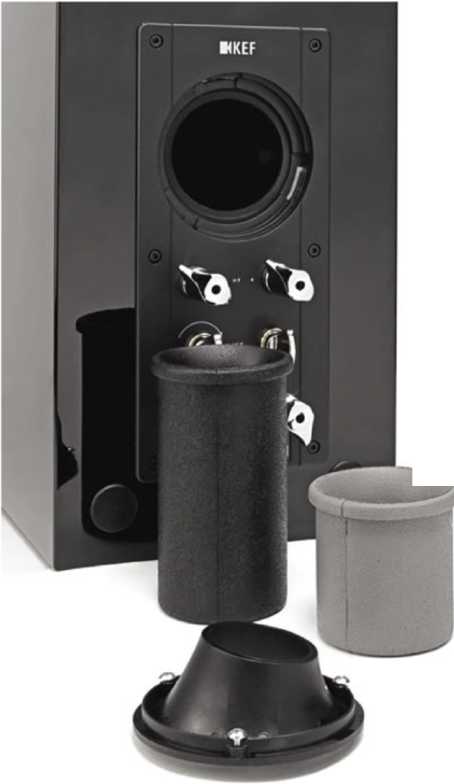
The long port (black) is tuned to 30Hz and the short one (grey) to 45Hz. Fastest and best integrated bass from short port; lowest bass from long port.
Same again with Fleetwood Mac’s Dreams (24/96) where Mick Fleetwood’s cymbal crashes were clear and clean, lacking the mush that often comes off them. I attributed this to tape overload (saturation) of a late-1970s multitrack studio recorder when it may well be from tweeters manufactured 40 years later.The Meta tweeter had magical ability here – and it was consistent. Highs were clean, clean, and there was also a return of sonorous sweetness to strings, across a wide range of music I played. It was nice to hear what I
felt was a definitive version of the recording rather than yet another one, different but not better than the other ones. As a reviewer this puts me into a guessing game – which is right? – that I don’t like.The KEFs were convincingly correct.
Similar strengths affected classical.With the Minnesota Orchestra playing Korsakov’s Dance of the Tumblers (24/96) there was a spacious depiction of the hall’s acoustic and the rasp of brass was sonorously rich, filled with timbral content. Yet it was also pure and simple it seemed to me.There were regular strikes from a kettle drum at the back of the sound stage and these were both powerful and well timed, if soft in outline definition. I’m sliding into bass quality here and as with Rock the Metas were fulsome in their bass rather than viscerally punchy.
Sliding out of bass quality and back to the classical viewpoint, the same sense of balance I heard with Rock was a positive, the Trondheim Soloists behind Marianne Thorsen playing Mozart Violin Concerto No4 (DSD) sitting in a deep open space where their violins came over as rich and lustrous, rather than edgy and congested. An easy listen and a convincing one.There was a sense of speedy snap to timing as well; the alloy cones are no laggards.
Running through a wide range of hi-res material I heard immaculate imaging, where maracas and bells were firmly placed on the sound stage.Vocals did not especially jump out, as they can do where a bit of midband lift exists, which is another design tweak sometimes employed.The KEFs put singers into natural position, retaining perspectives, and this was another place they struck me as easily natural – unforced.
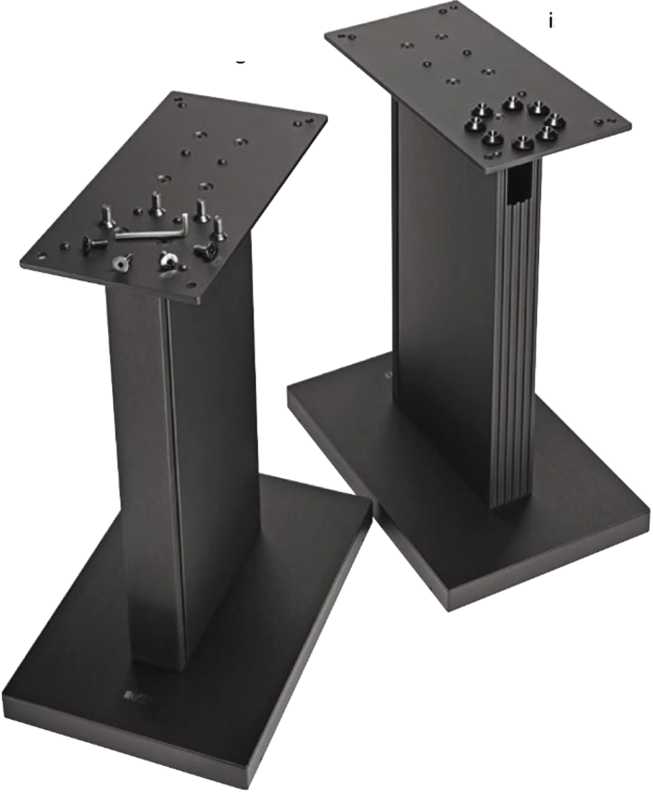
KEF’s S-RF1 hollow stands take a cable down the central column and out at base-rear. Made of aluminium, they are sturdy but liftable and come with an array of spikes.
CONCLUSION
I enjoyed hearing a “proper loudspeaker”. One that gets it right – showing conspicuous problems, alternatively described as conspicuous delusions, in many others.This is the issue of raising output from a dodgy tweeter to add “speed and detail” meaning pain and hash. In the Reference I Meta KEF bring us a lesson in what the truth sounds like – and it’s good, very good. Smoothly clear, cohesive, deeply detailed yet dynamically lively too.

The Uni-Q driver with its alloy dome tweeter behind tangerine waveguides.
The important alloy midrange cone has radial stiffening ribs and narrow gap to baffle for smoothest dispersion of the sound wave.
There was just nothing to criticise other than soft bass that, I suspect, gets sorted by greater cone area in the bigger models.
KEF’s Reference I Meta is a loudspeaker that is both exciting and accurate – not easy to achieve. Listen to it before all else if you can, just to hear what the truth sounds like.
MEASURED PERFORMANCE
As expected from a KEF Reference loudspeaker, frequency response analysis shows a flat, smooth characteristic right across the audio band. There’s no treble lift to enhance brightness/detail in the sound, nor a crossover dip around 3kHz to slightly soften delivery, lowering ‘insight’. Crossover is quoted as 2.1 kHz and the impedance trace confirms this by its peak, impedance falling above 3kHz as the tweeter comes into play. Lack of perturbations in the response from local resonances suggests low colouration.
The two-way (treble/bass-mid) Uni-Q drive unit at top in the cabinet crosses over at 450Hz to an aluminium cone bass unit below it and this extends down to 37Hz KEF say, which is about right in anechoic conditions, a fast chirp response confirmed (not shown). The long port supplied peaks narrowly at 30Hz (yellow trace) our published analysis shows, whilst the short port offers better bass damping (broader peak) being tuned around 45Hz (red trace). So the Meta 1 reaches very low, with the long port in particular.
Sensitivity was on the low side at 85dB sound pressure level for one nominal Watt of input (2.8V), making amplifiers of >60W suitable. Overall impedance, measured with pink noise, was low at 4.7 Ohms with a resistive minimum (d.c.r.) of 3.5 Ohms, so the speakers will draw current but modern amplifiers can cope with this.
The KEF Reference 1 Meta produces exemplary results, living up to the Reference moniker. This is a truly accurate loudspeaker with extended yet even bass and equally extended smooth treble.

VERDICT
+44 (0)1622 672261
www.Uk.kef.com
KEF Reference 1 Meta Unboxing
KEF Reference 1 Meta Review
My written review can be found here: ...







Great review! I’ve been considering upgrading my speakers, and the KEF Reference 1 Meta seems like a fantastic option. Your insights on the sound quality and design really help in making a decision. Thanks for sharing!